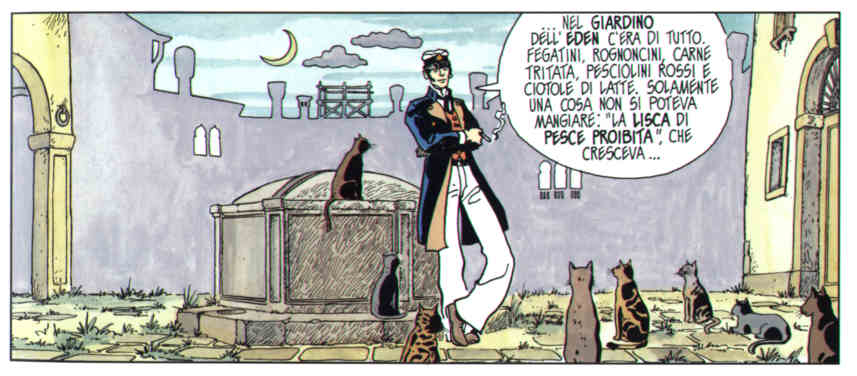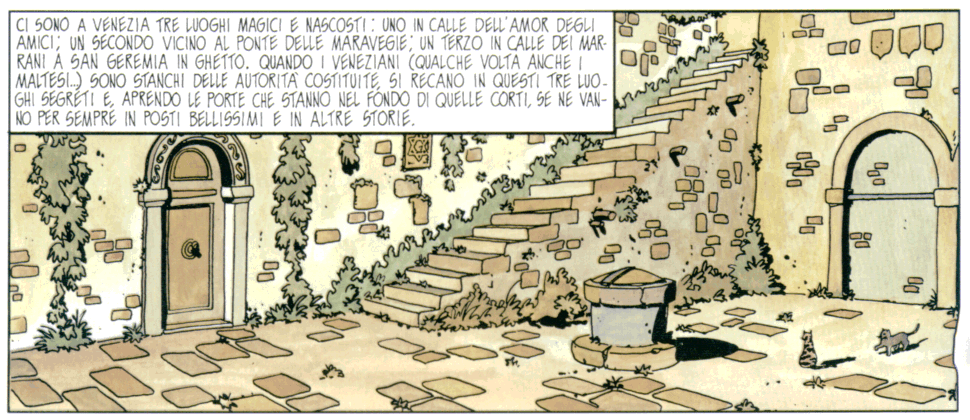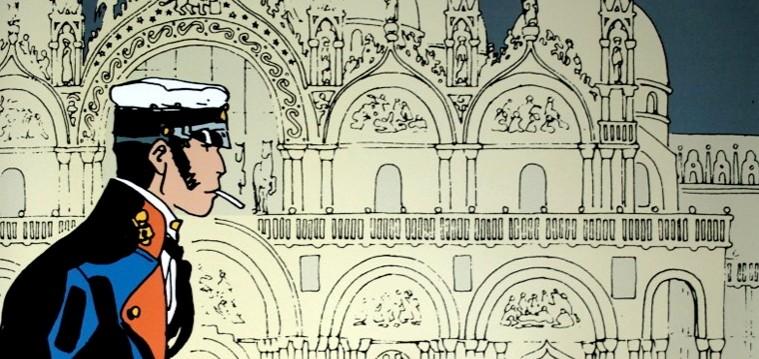Beneath the eternal sky of Venice, with its narrow alleyways and meandering canals, lies a captivating story, the story of a man whose creativity traversed the waters of time like a gondola on the lagoon. Hugo Pratt, a multifaceted artist, painted a world of adventures with words and drawings through his indomitable character, Corto Maltese, but there was another love he nurtured in his heart: Venice.
The city of wonders, with its ancient stones and centuries-old stories, had enchanted Pratt’s wandering soul. This man, a poet with a pencil, explored every hidden nook and toasted in smoky taverns with friends. But his true homage to the Serenissima was hidden in the pages of his comics.
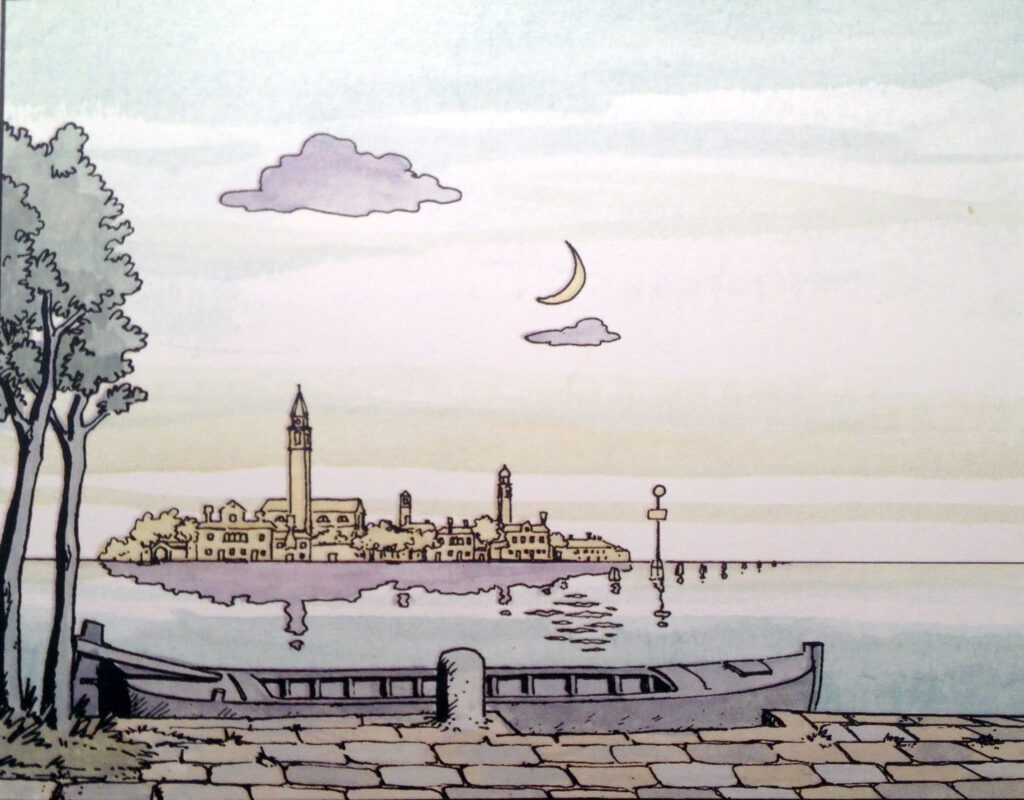
In the heart of this magical city, I had the honor of encountering one of his most extraordinary creations: the Acqua Alta Bookshop. A place where books, piled in seemingly random order, seemed to have grown organically like seaweed on the banks of the Grand Canal. It was there, among those ancient volumes imbued with history, that I discovered “Fable in Venice,” a Corto Maltese tale intertwined with the mysteries of Freemasonry, a parallel world of secrets only Pratt could illustrate with his magical pencil.
The panels were an ode to Venice, a journey back in time to the Fascist era. With each brushstroke, Pratt brought to life familiar and secret places, fields and churches, bridges, and statues. It was as if the pages were breathing, carrying with them the scents of ancient Venice and the sounds of its inhabitants.
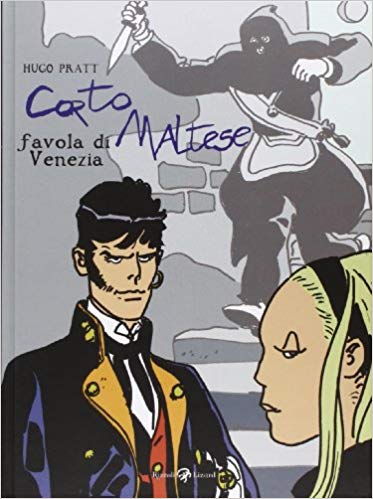
What fascinated me most were those almost hidden corners, treasures concealed like precious gems in a secret chest. They were places reserved for those who intimately knew Venice, for those who dug beneath the surface of a city jealously guarding its secrets.
The secluded campos, small secret squares surrounded by ancient buildings with chipped walls, were like forgotten jewels in the heart of the city. Here, tranquility reigned supreme, and the golden reflections of the sun filtered through the leaves of climbing plants scaling the walls. It was a place where time seemed to stop, where one could sit on an old wooden bench and simply contemplate the discreet beauty of Venice.
The silent wells, surrounded by old stones smoothed by time, were like ancient fountains of wisdom that had witnessed centuries of stories. Here, the dark, reflective water whispered incomprehensible secrets to attentive ears. It was as if each well hid a part of Venice’s history, a part only those venturing into these hidden alleys could discover.
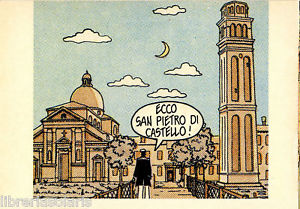
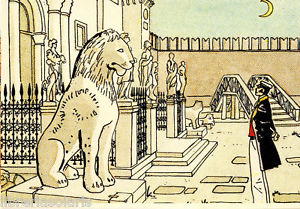
The old doors, adorned with rusted hardware and signs of the past, concealed secret gardens, corners of paradise far from the tourist crowds. Behind them lay a world of lush greenery, with brightly colored flowers and ancient trees that seemed guardians of ancient secrets. It was a refuge from the city’s frenzy, a place where nature and human artistry merged in harmonious symbiosis.
The welcoming taverns were like taverns of times past, where the noise of conversations provided a melodic backdrop and the scent of delicious food filled the air. Here, time was in no hurry, and one could sit at a weathered wooden table, sipping a glass of wine and sharing stories with friends or passing strangers. It was an authentic Venice, far from mass tourism, where hospitality was genuine and the smile of the proprietors made you feel at home, with no obligation to consume.
These were the hidden treasures that Hugo Pratt masterfully captured in his panels, transforming intimate and authentic Venice into an immortal artwork. These places still patiently await those who have the time to discover them, to listen to their whispered stories, and to immerse themselves in the eternal enchantment of Venice.
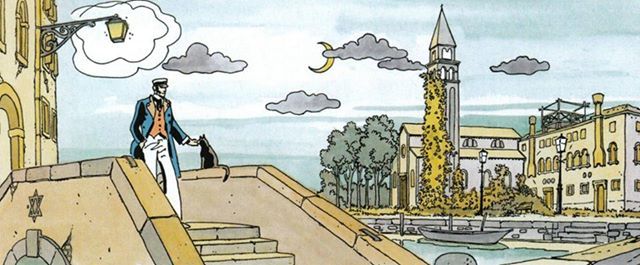
Today, that world seems to have vanished, like a fading artwork, its nuances fading into the past like the colors of an ancient fresco worn by humidity and age. The authentic Venice, so vividly depicted in Hugo Pratt’s panels, seems to have escaped the clutches of mass tourism, giving way to a different, modern city, perhaps a bit more detached from its roots.
However, a legend lingers among the alleyways and canals of Venice, a legend that offers hope of rediscovering those secrets buried beneath the lagoon’s waters. It is said that the cats of Venice are the last keepers of these stories, mysterious and silent creatures that roam the city with eyes that seem to tell millennia of secrets.
Perhaps, if one takes the time to linger by an ancient well or to sit quietly on a solitary bench in one of the secluded campos, the cats of Venice will approach with a stealthy step. In that whispered dialogue between the art and magic of this eternal city, they might choose to share a story or a secret, a fragment of that authentic Venice that continues to live in their feline hearts.
Venice, with its ancient alleyways and its mysterious events submerged under water, continues to inspire artists like Hugo Pratt to paint its enchantment in the hearts of those who love it. Even as the world changes and the waters of the lagoon continue to rise, the eternal charm of this unique city persists, ready to enchant and reveal its secrets to those willing to listen.
